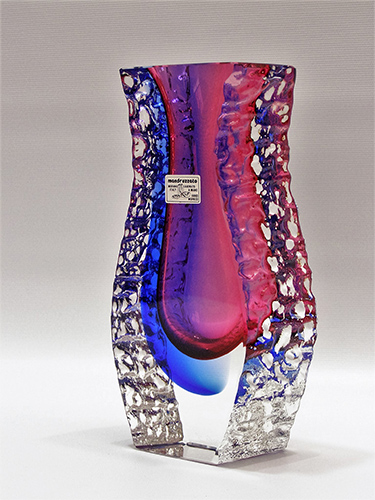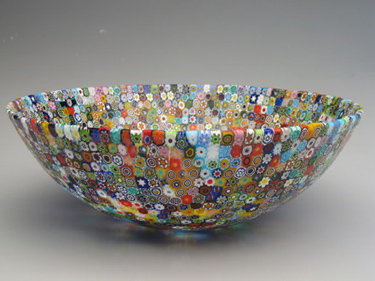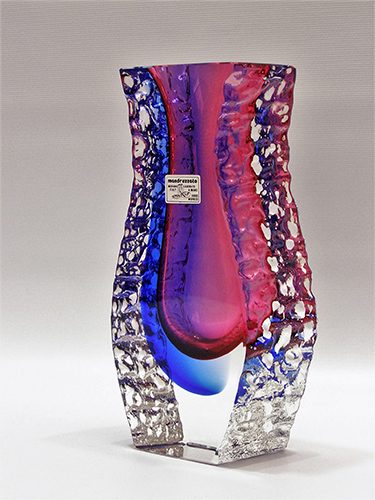 The Italian island of Murano is renowned for its historic glass factories, which have prospered in the face of events including World War 2 and the more recent economic downturn. The island is home to iconic and highly reputable brands including Venini, De Biasi and Salviati to name but a few.
The Italian island of Murano is renowned for its historic glass factories, which have prospered in the face of events including World War 2 and the more recent economic downturn. The island is home to iconic and highly reputable brands including Venini, De Biasi and Salviati to name but a few.
The glass manufacturers of the island have won global respect and are synonymous with innovation. One problem the industry has been facing over recent years is the shrinking of the industry as well as the commercial success of poorer quality imitations from Eastern Europe and Asia. The fact that many consumers are unable to tell the difference between genuine Italian glass and inferior reproductions has also hit the industry hard. It’s said that the number of glassmakers in Murano has fallen from over 6000 to less than 1000 over the last quarter of a century.
Finding authentic pieces
Purchasers of Italy’s art glass are being encouraged to be aware of imitations. One way of identifying whether a piece is genuine or not is to seek out the Murano trademark, which proves authenticity. Learning about the materials and techniques used to produce authentic Italian art glass can also help consumers spot fakes.
How the glass is made
Italian glass art usually begins its life as grains of sand as the glass is usually made from 70% silica sand, with the remainder being made up of “fluxes” and “stabilisers”. Flux material ensures that the glass can be melted at a lower temperature so it can be hand-worked and given its smooth, bubble-free composition, whilst the stabiliser ensures the glass doesn’t become soluble in water. Murano glass normally contains sodium oxide, which is used as a flux material and slows down the solidification process so the glass can be shaped by hand. Sodium, nitrate and arsenic are used to ensure the glass surface is opaque and to destroy bubbles.
Different techniques
Murano glass is clear and colourless before minerals, oxides and chemical derivatives are used to bring colour. They are added to the glass powder before the melting process begins. The “Murrine” technique is based on coloured liquid glass being layered, then stretched and worked into canes. These are later sliced open so a pattern can be revealed. The “Sommerso” technique involves coloured glass being dipped into molten glass before it is blown into a desired shape. This enables the coloured glass to be held in clear glass. This technique was developed in the 1930s and popularised two decades later by Seguso d’Arte. Many other special techniques are used to produce the pieces the island is famous for.

Finding out more
Many Italian glass art enthusiasts have embarked on tours of Murano’s glassworks to see the processes up close. This has made them more adept at identifying genuine products. Italian art glass is highly collectable and many investors have made serious money by purchasing pieces and selling them on at a later date.
Tools used for Murano glass
Murano artisans produce Italian glass art via a series of different tools. Borselle are tongs or pliers that play a pivotal role in the hand-forming process when temperatures are at their highest, whilst the blowing pipe is called canna da soffio. The pontello is an iron rod that allows the glassmaker to attach objects after blowing, and the large glass-cutting clippers often used in the production of goods are called tagianti. The workbench is called the scagno. Tools used to make Italian glass have not changed remarkably over the years. There is a huge emphasis on skill and technique rather than relying on tools.
Popular glass products
Some of today’s most popular Italian glass products include glass chandeliers, paperweights, wine stoppers, glass figurines and collectables for tourists. Enthusiasts wishing to dig deeper into the history of the movement often visit the Glass Museum or Museo del Vetro, which is located in the Palazzo Giustinian and focusses on the history of Italy’s art glass production from Egyptian times right up to the present day. As well as factories, Murano is also home to a number of individual artists’ studios.
When buying online
It is possible to buy authentic art glass from online auction sites, but it’s wise to be extremely vigilant for fakes. If the colours are neither bright nor rich, there is no mention of genuine gold or silver being used to produce the glass or a description like “Murano-type” is visible rather than the official mark “Murano Glass”, then it’s a good idea to pursue other avenues in your quest for genuine Italian art glass products.

